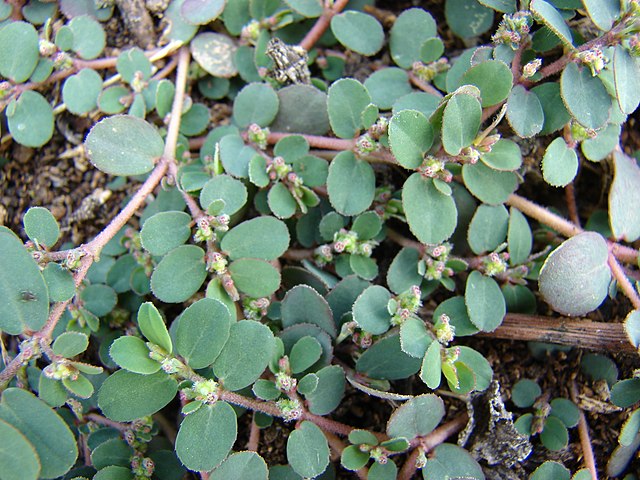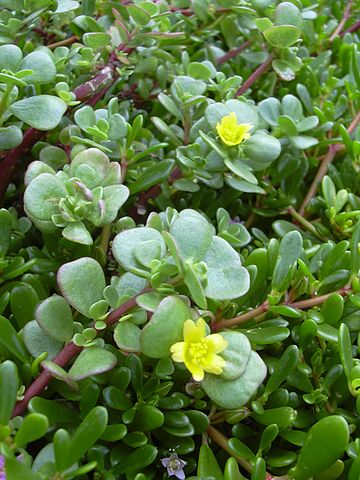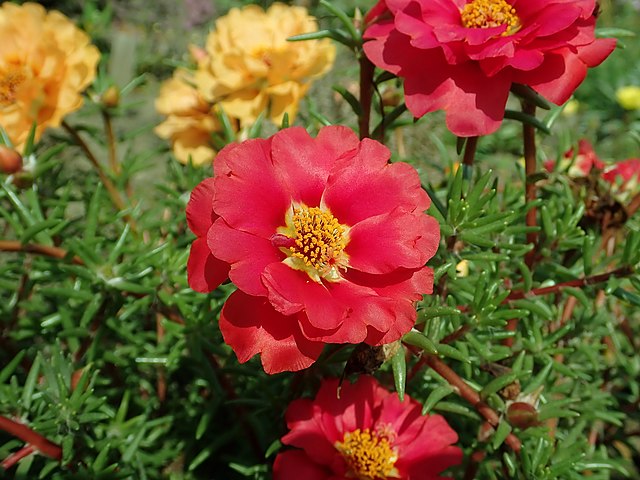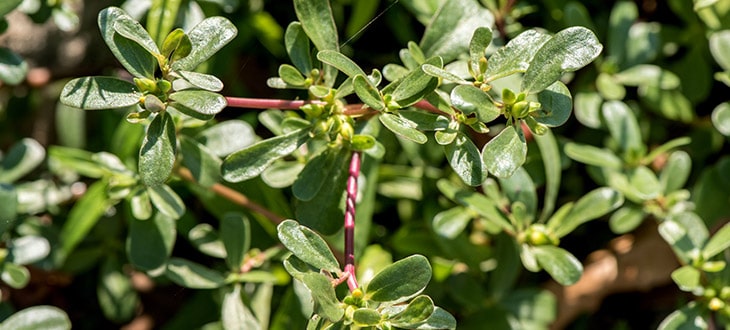2 Common Purslane Look-Alikes
Are you looking for common purslane look-alikes? Learn how to identify purslane correctly and which are the plants that are frequently misidentified as it.
Common purslane (Portulaca oleracea) is a succulent plant in the family Portulacaceae. It is also known as common purslane, garden purslane, little hogweed, fatweed, or pursley. Some of these names might be generally used for other species of plants in the genus Portulaca.
It is a perennial plant in some areas, but it generally grows as an annual because it cannot survive frost.
The common purslane is believed to be native to North Africa, the Middle East, and the Indian subcontinent and naturalized to most parts of the world. The first reports of this plant date back to 4000 years ago.
Although it is seen as a weed by many, the common purslane is edible and a good food source. It can be eaten both raw in salads or cooked. All its parts are edible, including the seeds.
Purslane has a slightly sour taste and is a good source of vitamin E and C. It also contains an essential omega-3 fatty acid called “alpha-linolenic acid.”
Contents
How to identify common purslane
Common purslane is fairly easy to identify, but there are a few plants that may look similar to it and one of them is toxic. Thus, if you harvest purslane for consumption is essential to know how to identify it correctly.

The common purslane grows in full sun and can thrive in most soil types. It is a highly drought-tolerant plant and is frequently found growing on roadsides, disturbed areas, cultivated fields, driveways, sidewalks, between pavers, in yards, gardens, etc.
Its stems are succulent, smooth, yellowish-green or reddish, extend on the ground and form a dense mat. It is a low-growing plant but it may reach up to 12-16 inches (30-40 cm) in height.
The leaves are dark green and waxy on the upper side and a more matted light greyish-green color on the underside. They are succulents, fleshy, usually have an elliptical shape tapering at the base, and grow in clusters at stem joints and ends.
From spring to fall, it produces tiny yellow, orange, or red flowers that close at night and re-open when exposed to several hours of sun during the day.
It produces numerous brown to black tiny seeds that are released from round to egg-shaped capsules.
Not that you know how to recognize common purslane, let’s see which are some of its look-alikes.
Common Purslane Look-Alikes
Due to its peculiarities, the common purslane can be easily recognized in most cases. Yet, there are several other plants that resemble it in some aspects.
1. Prostrate Spurge (Euphorbia Prostrata)
Prostrate spurge (Euphorbia prostrata), is an annual weed in the family Euphorbiaceae. It many times grows in the same places as purslane, so these two may be easily mistaken.
The genus Euphorbia includes various species of plants that are commonly referred to as “spurges,” but not all of them look like purslane.
One species that look pretty similar to purslane is the prostrate spurge. There is also the spotted spurge (Euphorbia maculata), but this is almost identical to the prostrate spurge, and many claim to be the same plant.

The prostrate spurge is a very adaptable weed and just like purslane, it thrives in most soil types and in various environments like on the side of sidewalks, driveways, cement cracks, turfs, cultivated fields, etc. It grows similar to purslane, but it doesn’t grow as tall.
Prostrate spurge has pinkish to reddish stems, thinner than the ones of purslane and which are covered with fine hairs. These extend over the ground forming dense mats.
The leaves of prostrate are pale or light green, have an elliptical shape, are hairy, may have dark-colored spots on their upper surface, and grow oppositely on the stems. They are not as large, thick, and juicy as the leaves of purslane.
Prostrate spurge blooms from summer to fall and produces many tiny white flowers at the base of the leaves on the upper part of the stems.
The leaves, stems, and flowers contain a poisonous, milky, white, latex-like sap.
Prostrate spurge is toxic to humans and animals. These plants should be handled with caution and kept away from children and pets as they can produce skin irritations, painful inflammations of mucous membranes, and can affect vision if their sap gets in contact with the eyes.
2. Other Plants In The Genus Portulaca
Other lookalikes of common purslane are other plants in the same genus, Portulaca.
This genus includes over 100 species of plants found throughout the world’s temperate regions. They are generally known as “purslanes.”
A number of them have common characteristics and are sometimes very difficult to distinguish. Therefore, some of them are very often mistaken with the common purslane as it is the most well-known species.

Several of the most common species of this genus include:
- Portulaca quadrifida
- Portulaca umbraticola
- Portulaca amilis
- Portulaca grandiflora
- Portulaca lutea
Some varieties are grown as ornamental plants for their flowers, others are cultivated for consumption, while others are seen as weeds and grow as wild plants in various environments.

The good news is that although it is difficult to identify the exact variety of many species in this genus, there is no evidence that it would include any poisonous species to humans. Although some are inedible as they are too bitter and don’t taste good, many are considered edible.
Final Word
The common purslane is a plant used both as food and as a medicine for some diseases of the digestive system. That is why it is essential to know how to identify this plant correctly and to avoid toxic lookalikes like some species of spurge.

